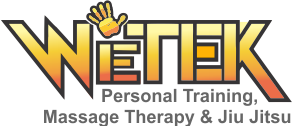Muscle Imbalances in Jiu Jitsu from Guards, Posture Rehabilitation
One HUGE thing about Jiu Jitsu Practitioners that we all have in common, WE LOVE TO DO IT! However, it comes with a price just like any other sport or repetitive movement. Oftentimes in my observations in the field of training Jiu Jitsu, studying Corrective Exercise and Personal training, along with anatomy and Massage Therapy, a few things became clear…..
Overuse of the same muscle groups causes muscle imbalances, if you are a young person who does not sit behind a computer all day, or due to your age recovers fast, its one thing, unlike those dedicated practitioners, others may have a full time job which causes stress not only mentally, but in their posture. The two common muscle imbalances I notice from individuals are : Tight Hips and Hip flexors, Hamstrings and Chest, rounded shoulders and anterior pelvic tilt, along with lateral shifting of the hips and forward head.
This is due to them sitting most of the day, which results in tightening of these groups of muscles , and their opposing groups often times get weak : such as the glutes,
Think of it this way: Some get overactive and others underactive, which makes the joints in the middle suffer, they either become jammed together or hyper immobile:
As a Jiu Jitsu Practitioner, we spend so much time in the same positions which place very much the same tension onto the same muscle groups while training as in the sitting posture. Example: Constantly activating our hips and hip flexors to play various guards, forward head from constant neck tension, rounded shoulders from constant reaching and gripping. This perpetuates the cycle of tightening the ones which are ALREADY tight from sitting and keeps the ones which are weaker …weak: Glutes, Lower back, Rhomboids , neck extensors, lower back and Transverse S. etc
This may lead to things such as :Lower back Injuries due to :
1,Iliac Joint,2. Lumbar Facet joint,
Posture effect:
1. Lower Crossed Syndrome
Gait: 1.Decreased Hip extension, 2.Increased compensatory lumbar extension,3. Excessive toeing out, 4.Excessive prolonged pronation
I believe, based on my research and studies under NASM (National Academy of Sports Medicine), that once we can identify based on simple tests which muscles are underactive, overactive, along with a look at your Jiu Jitsu Game and your lifestyle, then begin making changes using the correct stretching for the tight tissues, strength training routines for the weaker (underactive) along with myofascial release………. over time in the long run, this will not only increase your performance due to the restored range of motion , also lessen your discomfort, which will lead to an overall healthier mental state elsewhere, as it is all connected, and the body works as a integrated unit. Therefore, optimum alignment and function of each component of the kinetic chain is a cornerstone to a functional program which will help with rehabilitation and movement, increase your Jiu Jitsu Game, provide a healthier feeling along with better movement. :
Thank you For Reading and please Stay Tuned For More

Leave a Comment
(0 Comments)